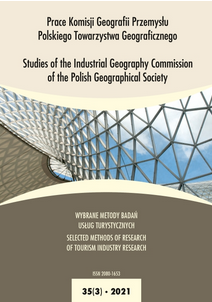Transborder recreational tourism complexes (TBRTC) as a result of international collaboration
Transborder recreational tourism complexes (TBRTC) as a result of international collaboration
Author(s): Zhanna BuchkoSubject(s): International relations/trade, Transformation Period (1990 - 2010), Present Times (2010 - today), Tourism
Published by: Wydawnictwo Uniwersytetu Komisji Edukacji Narodowej w Krakowie
Keywords: Euro-Region; recreational tourism complex; tourism; transborder cooperation; transborder tourism;
Summary/Abstract: The paper discusses the notion of a transborder recreational tourism complex (TBRTC) as a geographic and as a wider multidisciplinary concept and describes such complexes within transborder tourism regions in Western Ukraine. A TBRTC is introduced as a spatial formation that arises within tourism-specific transborder collaboration. A TBRTC combines three necessary components: the entirety of all tourism-attracting resources in a specific transborder region; the travel-enabling infrastructure, including transborder-specific features like border-crossing checkpoints; and informational and coordination resources such as tour operating services and defined tourist routes. The paper explains basic terminology and key principles for formation and existence of TBRTCs. The authors start by explaining the unique characteristics of transborder tourism in Europe and in tourism-oriented formations called Euro-zones. A principal model of TBRTC is proposed, including the list of factors necessary for its formation, the key structural modules of a complex; and the causal connectivity map between these modules applied to different types of tourism. The concept of a TBRTC is illustrated using the example of the TBRTC forming in Bukovina-Bessarabia transborder region along part of Ukraine-Romania-Moldova border. This region offers multiple types of tourism activities, which translates into the emergence of a robust transborder tourism recreation complex that started forming in the late 1990s and continues to be shaped until this time.
Journal: Prace Komisji Geografii Przemysłu Polskiego Towarzystwa Geograficznego
- Issue Year: 35/2021
- Issue No: 3
- Page Range: 76-89
- Page Count: 14
- Language: English

